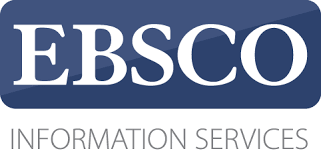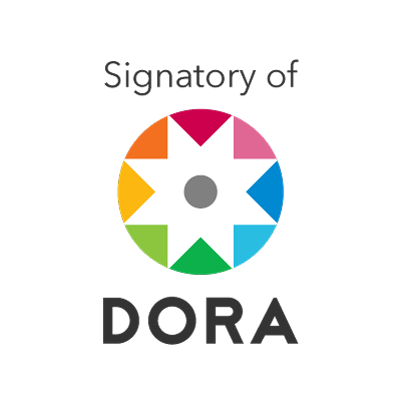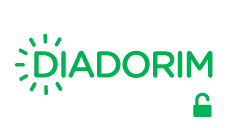Norma digital e competência ortográfica de adolescentes em contextos vulneráveis
um estudo de casos
DOI:
https://doi.org/10.1590/1983-3652.2024.47493Palavras-chave:
Textismos, WhatsApp, Comunicação digital, Zonas de necessidade de transformação social, Contextos vulneráveisResumo
Este artigo de pesquisa examina a relação entre competência ortográfica e competência digital em estudantes do Ensino Secundário Obrigatório em contextos vulneráveis. Foi realizado um estudo de casos comparando duas escolas secundárias em áreas carentes de transformação social com duas escolas sem problemas de integração social. A amostra consistiu em 126 estudantes com idades entre 14 e 16 anos, selecionados de forma intencional. Os resultados indicam que não há diferenças significativas na relação entre ortografia acadêmica e o uso de textismos na comunicação digital em ambos os tipos de escolas. Conclui-se que a escrita digital não prejudica a ortografia acadêmica dos estudantes adolescentes, independentemente do ambiente em que vivem. No entanto, os alunos das escolas em áreas carentes de transformação social apresentam um uso diferenciado da norma digital: utilizam menos textismos léxicos, semânticos e multimodais, e cometem um número maior de erros ortográficos. Essas descobertas destacam a necessidade de abordar de forma diferenciada a competência ortográfica e digital no contexto educacional para os estudantes, dependendo do contexto em que vivem e estudam.
Downloads
Referências
ADAMS, Aubrie y MILES, Jai. Examining textism convergence in mediated interactions. Language Sciences, v. 99, p. 1-14, 2023. DOI: 10.1016/j.langsci.2023.101568.
ARREDONDO, Rafael y PALMA-GARCIA, Maria de las Olas. Zonas con necesidades de transformación social en Andalucı́a. Riesgos y retos ante su mantenimiento y naturalización. Zaragoza, 2018. Disponible en: https://riuma.uma.es/xmlui/handle/10630/16697.
BERNICOT, Josie; GOUMI, Antonine; BERT-ERBOUL, Alain y VOLCKAERT-LEGRIER, Olga. How do skilled and less-skilled spellers write text messages? A longitudinal study. Journal of Computer Assisted Learning, v. 30, n. 6, p. 559-576, 2014. DOI: 10.1111/jcal.12064.
BISQUERRA, Rafael. Metodología para la investigación educativa. [S. l.]: La Muralla ed., 2016.
BURRELL, Andrew y BEARD, Roger. Playful punctuation in primary children’s writing. British Educational Research Journal, v. 48, n. 5, p. 896-914, oct. 2022. ISSN 0141-1926, 1469-3518. DOI: 10.1002/berj.3800. Disponible en: https://bera-journals.onlinelibrary.wiley.com/doi/10.1002/berj.3800. Acceso en: 2 nov. 2023.
BUSHNELL, Catherine; KEMP, Nenagh y MARTIN, Frances Heritage. Text-Messaging Practices and Links to General Spelling Skill: A Study of Australian Children. Australian Journal of Educational & Developmental Psychology, v. 11, p. 27-38, 2011. ISSN 1446-5442. Disponible en: https://eric.ed.gov/?id=EJ941319. Acceso en: 2 nov. 2023.
CHALAK, Azizeh. Linguistic Features of English Textese and Digitalk of Iranian EFL Students. Research in Applied Linguistics, v. 8, Proceedings of the Fourth International Conference on Language, Discourse and Pragmatics, feb. 2017. DOI: 10.22055/rals.2017.12870. Disponible en: https://doi.org/10.22055/rals.2017.12870. Acceso en: 2 nov. 2023.
COE, J.E.L. y OAKHILL, J.V. ‘txtN is ez f u no h2 rd’: the relation between reading ability and text‐messaging behaviour. Journal of Computer Assisted Learning, v. 27, n. 1, p. 4-17, feb. 2011. ISSN 0266-4909, 1365-2729. DOI: 10.1111/j.1365-2729.2010.00404.x. Disponible en: https://onlinelibrary.wiley.com/doi/10.1111/j.1365-2729.2010.00404.x. Acceso en: 2 nov. 2023.
COMISIÓN NACIONAL DE LOS MERCADOS Y LA COMPETENCIA (CNMC). Ocho de cada diez internautas usan la mensajería instantánea diariamente en su smartphone | CNMC. [S. l.: s. n.], 2023. Disponible en: https://www.cnmc.es/prensa/panel-usos-internet-servicios-ott-cnmc-20230526. Acceso en: 2 nov. 2023.
DE JONGE, Sarah y KEMP, Nenagh. Text‐message abbreviations and language skills in high school and university students. Journal of Research in Reading, v. 35, n. 1, p. 49-68, feb. 2012. ISSN 0141-0423, 1467-9817. DOI: 10.1111/j.1467-9817.2010.01466.x. Disponible en: https://onlinelibrary.wiley.com/doi/10.1111/j.1467-9817.2010.01466.x. Acceso en: 2 nov. 2023.
DROUIN, M.A. College students’ text messaging, use of textese and literacy skills. Journal of Computer Assisted Learning, v. 27, n. 1, p. 67-75, feb. 2011. ISSN 0266-4909, 1365-2729. DOI: 10.1111/j.1365-2729.2010.00399.x. Disponible en: https://onlinelibrary.wiley.com/doi/10.1111/j.1365-2729.2010.00399.x. Acceso en: 2 nov. 2023.
DROUIN, Michelle y DRIVER, Brent. Texting, textese and literacy abilities: a naturalistic study. Journal of Research in Reading, v. 37, n. 3, p. 250-267, agosto 2014. ISSN 0141-0423, 1467-9817. DOI: 10.1111/j.1467-9817.2012.01532.x. Disponible en: https://onlinelibrary.wiley.com/doi/10.1111/j.1467-9817.2012.01532.x. Acceso en: 2 nov. 2023.
ESCARBAJAL FRUTOS, Andrés; GELABERT, Miquel A. Essomba y PASTOR, Beatriz Abenza. El rendimiento académico de alumnos de la ESO en un contexto vulnerable y multicultural. Educar, v. 55, n. 1, p. 79-99, enero 2019. ISSN 2014-8801. Disponible en: https://raco.cat/index.php/Educar/article/view/v55-n1-escarbajal-essomba-abenza. Acceso en: 2 nov.
FERNÁNDEZ JULIÁ, Olga y GÓMEZ-CAMACHO, Alejandro. Textisms and textese: A systematic review. Revista Fuentes, v. 25, n. 3, p. 305-317, 2023. ISSN 15757072, 21727775. DOI: 10.12795/revistafuentes.2023.23011. Disponible en: https://institucional.us.es/revistas/fuente/25_3/23011_F.pdf. Acceso en: 2 nov. 2023.
FONDEVILA-GASCÓN, Joan Francesc; MARQUÉS-PASCUAL, Joaquín; MIR-BERNAL, Pedro y POLO-LÓPEZ, Marc. Usos del WhatsApp en el estudiante universitario español. Pros y contras. Revista Latina de Comunicación Social, n. 74, p. 308-324, enero 2019. ISSN 1138-5820. DOI: 10.4185/RLCS-2019-1332. Disponible en: https://nuevaepoca.revistalatinacs.org/index.php/revista/article/view/283. Acceso en: 2 nov. 2023.
FORBES, Flora-Jean M. y BUCHANAN, Erin M. “Textisms”: The comfort of the recipient. Psychology of Popular Media Culture, v. 8, n. 4, p. 358-364, oct. 2019. ISSN 2160-4142, 2160-4134. DOI: 10.1037/ppm0000194. Disponible en: http://doi.apa.org/getdoi.cfm?doi=10.1037/ppm0000194. Acceso en: 2 nov. 2023.
GÓMEZ CAMACHO, Alejandro y GÓMEZ DEL CASTILLO SEGURADO, María Teresa. La norma escrita en las conversaciones de WhatsApp de estudiantes universitarios de posgrado. Revista Mexicana de Investigacion Educativa, v. 22, n. 75, p. 1077-1094, 2017. ISSN 1405-6666. Disponible en: https://idus.us.es/handle/11441/67296. Acceso en: 2 nov. 2023.
GÓMEZ-CAMACHO, Alejandro; HUNT-GÓMEZ, Coral I. y VALVERDE-MACÍAS, Andrés. Textisms, texting, and spelling in Spanish. Lingua, v. 201, p. 92-101, enero 2018. ISSN 00243841. DOI: 10.1016/j.lingua.2017.09.004. Disponible en: https://linkinghub.elsevier.com/retrieve/pii/S0024384117301675. Acceso en: 2 nov. 2023.
GÓMEZ-CAMACHO, Alejandro; NÚÑEZ-ROMÁN, Francisco; LLORENT-VAQUERO, Mercedes y VILLACIERVOS-MORENO, Patricia. Ke Dise, Mi Arma? Dialectal Varieties in WhatsApp Digital Norm of Andalusian Adolescent Speakers. Languages, v. 8, n. 2, pág. 94, marzo 2023a. ISSN 2226-471X. DOI: 10.3390/languages8020094. Disponible en: https://www.mdpi.com/2226-471X/8/2/94. Acceso en: 2 nov. 2023.
GÓMEZ-CAMACHO, Alejandro; DE-PABLOS-PONS, Juan; COLÁS-BRAVO, Pilar y CONDE-JIMÉNEZ, Jesús. Escritura digital juvenil en WhatsApp y enseñanza de la ortografía. Youth digital writing on WhatsApp and the teaching of spelling. Comunicar, v. 31, n. 77, oct. 2023b. ISSN 1134-3478, 1988-3293. DOI: 10.3916/C77-2023-05. Disponible en: https://www.revistacomunicar.com/index.php?contenido=detalles&numero=77&articulo=77-2023-05. Acceso en: 2 nov. 2023.
GÓMEZ-JARABO, Inmaculada y SÁNCHEZ DELGADO, Primitivo. Vulnerables en la educación secundaria no obligatoria: una muestra de coraje. Contextos Educativos. Revista de Educación, n. 31, p. 179-199, marzo 2023. ISSN 1695-5714, 1575-023X. DOI: 10.18172/con.5096. Disponible en: https://publicaciones.unirioja.es/ojs/index.php/contextos/article/view/5096. Acceso en: 2 nov. 2023.
GRACE, Abbie y KEMP, Nenagh. Text messaging language: A comparison of undergraduates’ naturalistic textism use in four consecutive cohorts. Writing Systems Research, v. 7, n. 2, p. 220-234, jul. 2015. ISSN 1758-6801, 1758-681X. DOI: 10.1080/17586801.2014.898575. Disponible en: http://www.tandfonline.com/doi/full/10.1080/17586801.2014.898575. Acceso en: 2 nov. 2023.
GRACE, Abbie; KEMP, Nenagh; MARTIN, Frances Heritage y PARRILA, Rauno. Undergraduates’ text messaging language and literacy skills. Reading and Writing, v. 27, n. 5, p. 855-873, mayo 2014. ISSN 0922-4777, 1573-0905. DOI: 10.1007/s11145-013-9471-2. Disponible en: http://link.springer.com/10.1007/s11145-013-9471-2. Acceso en: 2 nov. 2023.
HUNT-GÓMEZ, Coral I.; NÚÑEZ-ROMÁN, Francisco; GÓMEZ-CAMACHO, Alejandro; HUNT-GÓMEZ, Coral I.; NÚÑEZ-ROMÁN, Francisco y GÓMEZ-CAMACHO, Alejandro. Textisms and spelling. Perception of pedagogy students of the Z Generation. Formación universitaria, v. 13, n. 2, p. 143-152, feb. 2020. ISSN 0718-5006. DOI: 10.4067/S0718-50062020000200143. Disponible en: http://www.scielo.cl/scielo.php?script=sci_abstract&pid=S0718-50062020000200143&lng=en&nrm=iso&tlng=en. Acceso en: 2 nov. 2023.
JACQUET, Baptiste; JARAUD, Caline; JAMET, Frank; GUÉRAUD, Sabine y BARATGIN, Jean. Contextual Information Helps Understand Messages Written with Textisms. Applied Sciences, v. 11, n. 11, pág. 4853, enero 2021. ISSN 2076-3417. DOI: 10.3390/app11114853. Disponible en: https://www.mdpi.com/2076-3417/11/11/4853. Acceso en: 2 nov. 2023.
JUNTA DE ANDALUCÍA. Zonas con Necesidades de Transformación Social (ZNTS). [S. l.: s. n.], 2016. Disponible en: https:
//www.juntadeandalucia.es/organismos/inclusionsocialjuventudfamiliaseigualdad/areas/inclusion/zonas-transformacion/paginas/introduccion-zonas-transformacion.html. Acceso en: 2 nov. 2023.
KEMP, Nenagh y CLAYTON, Jennifer. University students vary their use of textese in digital messages to suit the recipient. Journal of Research in Reading, v. 40, S1, dic. 2017. ISSN 0141-0423, 1467-9817. DOI: 10.1111/1467-9817.12074. Disponible en: https://onlinelibrary.wiley.com/doi/10.1111/1467-9817.12074. Acceso en: 2 nov. 2023.
LANCHANTIN, Tonia; SIMOËS-PERLANT, Aurélie y LARGY, P. Good spellers write more textism than bad spellers in instant messaging: The case of French. Psychnology Journal, v. 12, n. 1-2, p. 45-63, 2014.
LYDDY, Fiona; FARINA, Francesca; HANNEY, James; FARRELL, Lynn y KELLY O’NEILL, Niamh. An Analysis of Language in University Students’ Text Messages: Language In University Students’ Text Messages. Journal of Computer-Mediated Communication, v. 19, n. 3, p. 546-561, abr. 2014. ISSN 10836101. DOI: 10.1111/jcc4.12045. Disponible en: https://academic.oup.com/jcmc/article/19/3/546-561/4067601. Acceso en: 2 nov. 2023.
MARTÍN HIERRO, Lucía y PASTOR SELLER, Enrique. El aprendizaje basado en el juego como herramienta socioeducativa en contextos comunitarios vulnerables. Prisma Social: revista de investigación social, n. 30, p. 88-114, 2020. ISSN 1989-3469. Disponible en: https://dialnet.unirioja.es/servlet/articulo?codigo=7524840. Acceso en: 2 nov. 2023.
MOLINA GARCÍA, María José. ¿Hablamos? Análisis del discurso y estrategias empleadas en WhatsApp por estudiantes universitarios. Onomázein Revista de lingüística filología y traducción, n. 6, p. 274-294, 2020. DOI: 10.7764/onomazein.ne6.14. Disponible en: http://ojs.uc.cl/index.php/onom/article/view/29593. Acceso en: 2 nov. 2023.
MUÑOZ GARCÍA, Lucía. Políticas de bienestar y desigualdades urbanas. Evaluación del impacto de la Intervención social en Zonas con Necesidades de Transformación Social de Andalucía (2001-2011). 2023. Tesis (Doctorado) – Universidad Pablo de Olavide, Sevilla.
OUELLETTE, Gene y MICHAUD, Melissa. Generation text: Relations among undergraduates’ use of text messaging, textese, and language and literacy skills. Canadian Journal of Behavioural Science / Revue canadienne des sciences du comportement, v. 48, n. 3, p. 217-221, 2016. ISSN 1879-2669, 0008-400X. DOI: 10.1037/cbs0000046. Disponible en: http://doi.apa.org/getdoi.cfm?doi=10.1037/cbs0000046. Acceso en: 2 nov. 2023.
PARRELLA, Jean; LEGGETTE, Holli R. y REDWINE, Tobin. Measuring the correlation between digital media usage and students’ perceived writing ability: Are they related? Research in Learning Technology, v. 29, enero 2021. ISSN 2156-7077. DOI: 10.25304/rlt.v29.2506. Disponible en: https://journal.alt.ac.uk/index.php/rlt/article/view/2506. Acceso en: 2 nov. 2023.
PLESTER, Beverly; WOOD, Clare y JOSHI, Puja. Exploring the relationship between children’s knowledge of text message abbreviations and school literacy outcomes. British Journal of Developmental Psychology, v. 27, n. 1, p. 145-161, marzo 2009. ISSN 0261-510X, 2044-835X. DOI: 10.1348/026151008X320507. Disponible en: https://bpspsychub.onlinelibrary.wiley.com/doi/10.1348/026151008X320507. Acceso en: 2 nov. 2023.
POWELL, D. y DIXON, M. Does SMS text messaging help or harm adults’ knowledge of standard spelling? Journal of Computer Assisted Learning, v. 27, n. 1, p. 58-66, feb. 2011. ISSN 0266-4909, 1365-2729. DOI: 10.1111/j.1365-2729.2010.00403.x. Disponible en: https://onlinelibrary.wiley.com/doi/10.1111/j.1365-2729.2010.00403.x. Acceso en: 2 nov. 2023.
ROSEN, Larry D.; CHANG, Jennifer; ERWIN, Lynne; CARRIER, L. Mark y CHEEVER, Nancy A. The Relationship Between “Textisms” and Formal and Informal Writing Among Young Adults. Communication Research, v. 37, n. 3, p. 420-440, jun. 2010. ISSN 0093-6502, 1552-3810. DOI: 10.1177/0093650210362465. Disponible en: http://journals.sagepub.com/doi/10.1177/0093650210362465. Acceso en: 2 nov. 2023.
SCRIBANO, Adrián. Miradas cotidianas. El uso de Whatsapp como experiencia de investigación social. Revista Latinoamericana de Metodología de la Investigación Social, n. 13, p. 8-22, 2017. ISSN 1853-6190. Disponible en: http://www.relmis.com.ar/ojs/index.php/relmis/article/view/63. Acceso en: 2 nov. 2023.
STAKE, Robert. The art of case study. Londres: Sage, 1995. STATISTA. Distribución porcentual de los usuarios de WhatsApp en España en 2023, por frecuencia de uso. [S. l.: s. n.], 2023. Disponible en: https://es.statista.com/estadisticas/1017695/frecuencia-de-uso-de-whatsapp-por-los-usuarios-de-redes-sociales-en-espana/. Acceso en: 2 nov. 2023.
SUÁREZ LANTARÓN, Belén. Whatsapp: su uso educativo, ventajas y desventajas. Revista de Investigación en Educación, v. 16, n. 2, p. 121-135, oct. 2018. ISSN 2172-3427. Disponible en: https://revistas.uvigo.es/index.php/reined/article/view/2132. Acceso en: 2 nov. 2023.
TIQUE-GUTIÉRREZ, Marlie Atzene; CAMACHO-ANAYA, Juan Andres; SEGURA–GUEVARA, Yeny del Carmen; OROZCO–TORREGROSA, Ramiro; ORTEGA–MORENO, Lileiva Luz; IRIARTE–ARIZA, Mileima; MARTÍNEZ–RUDAS, Jaqueline;
GUTIÉRREZ–PÉREZ, Judith y CÁCERES–FERNÁNDEZ, Never Alfonso. Contexto socioeconómico sobre el rendimiento académico del estudiante mediante la investigación como estrategia pedagógica. CULTURA EDUCACIÓN Y SOCIEDAD, v. 9, n. 1, p. 171-180, feb. 2018. ISSN 2389-7724. DOI: 10.17981/cultedusoc.9.1.2018.13. Disponible en: https://revistascientificas.cuc.edu.co/culturaeducacionysociedad/article/view/2018. Acceso en: 2 nov. 2023.
TORRADO CESPÓN, Milagros. Uso del Smartphone y su reflejo en la escritura entre estudiantes de secundaria bilingües gallego – español. Digital Education Review, p. 77-90, dic. 2015. ISSN 2013-9144. DOI: 10.1344/der.2015.28.77-90. Disponible en: https://revistes.ub.edu/index.php/der/article/view/14374. Acceso en: 2 nov. 2023.
TOTANES, B. C.; LINTAO, R. B. Textese Categories and Textese Application in L2 Class Discussion. i-manager’s Journal on English Language Teaching, v. 9, n. 1, pág. 14, 2019. ISSN 2231-3338, 2249-0752. DOI: 10.26634/jelt.9.1.15249. Disponible en: http://www.imanagerpublications.com/article/15249. Acceso en: 2 nov. 2023.
VAN DIJK, Chantal N.; VAN WITTELOOSTUIJN, Merel; VASIĆ, Nada; AVRUTIN, Sergey y BLOM, Elma. The Influence of Texting Language on Grammar and Executive Functions in Primary School Children. Edición: Philip Allen. PLOS ONE, v. 11, n. 3, e0152409, marzo 2016. ISSN 1932-6203. DOI: 10.1371/journal.pone.0152409. Disponible en: https://dx.plos.org/10.1371/journal.pone.0152409. Acceso en: 2 nov. 2023.
VÁZQUEZ-CANO, Esteban; MENGUAL-ANDRÉS, Santiago y ROIG-VILA, Rosabel. Análisis lexicométrico de la especificidad de la escritura digital del adolescente en WhatsApp. RLA. Revista de lingüística teórica y aplicada, v. 53, n. 1, p. 83-105, jun. 2015. ISSN 0718-4883. DOI: 10.4067/S0718-48832015000100005. Disponible en: http://www.scielo.cl/scielo.php?script=sci_abstract&pid=S0718-48832015000100005&lng=en&nrm=iso&tlng=en. Acceso en: 2 nov. 2023.
VERHEIJEN, Lieke. The Effects of Text Messaging and Instant Messaging on Literacy. English Studies, v. 94, n. 5, p. 582-602, agosto 2013. ISSN 0013-838X, 1744-4217. DOI: 10.1080/0013838X.2013.795737. Disponible en: http://www.tandfonline.com/doi/abs/10.1080/0013838X.2013.795737. Acceso en: 2 nov. 2023.
VERHEIJEN, Lieke. Orthographic principles in computer-mediated communication: The SUPER-functions of textisms and their interaction with age and medium. Written Language & Literacy, v. 21, n. 1, p. 111-145, nov. 2018. ISSN 1387-6732, 1570-6001. DOI: 10.1075/wll.00012.ver. Disponible en: https://www.jbe-platform.com/content/journals/10.1075/wll.00012.ver. Acceso en: 2 nov. 2023.
VERHEIJEN, Lieke; SPOOREN, Wilbert y KEMENADE, Ans van. Relationships between Dutch Youths’ Social Media Use and School Writing. Computers and Composition, v. 56, pág. 102574, jun. 2020. ISSN 8755-4615. DOI: 10.1016/j.compcom.2020.102574. Disponible en: https://www.sciencedirect.com/science/article/pii/S8755461520300359. Acceso en: 2 nov. 2023.
WOOD, C.; JACKSON, E.; HART, L.; PLESTER, B. y WILDE, L. The effect of text messaging on 9‐ and 10‐year‐old children’s reading, spelling and phonological processing skills. Journal of Computer Assisted Learning, v. 27, n. 1, p. 28-36, feb. 2011b. ISSN 0266-4909, 1365-2729. DOI: 10.1111/j.1365-2729.2010.00398.x. Disponible en: https://onlinelibrary.wiley.com/doi/10.1111/j.1365-2729.2010.00398.x. Acceso en: 2 nov. 2023.
WOOD, Clare; KEMP, Nenagh y WALDRON, Sam. Exploring the longitudinal relationships between the use of grammar in text messaging and performance on grammatical tasks. British Journal of Developmental Psychology, v. 32, n. 4, p. 415-429, nov. 2014. ISSN 0261-510X, 2044-835X. DOI: 10.1111/bjdp.12049. Disponible en: https://bpspsychub.onlinelibrary.wiley.com/doi/10.1111/bjdp.12049. Acceso en: 2 nov. 2023.
WOOD, Clare; MEACHEM, Sally; BOWYER, Samantha; JACKSON, Emma; TARCZYNSKI-BOWLES, M. Luisa y PLESTER, Beverly. A longitudinal study of children’s text messaging and literacy development: Text messaging and literacy. British Journal of Psychology, v. 102, n. 3, p. 431-442, agosto 2011a. ISSN 00071269. DOI: 10.1111/j.2044-8295.2010.02002.x. Disponible en: https://onlinelibrary.wiley.com/doi/10.1111/j.2044-8295.2010.02002.x. Acceso en: 2 nov. 2023.
Downloads
Publicado
Edição
Seção
Licença
Copyright (c) 2023 Olga Fernández-Juliá, Alejandro Gómez-Camacho

Este trabalho está licenciado sob uma licença Creative Commons Attribution 4.0 International License.
Este é um artigo em acesso aberto que permite o uso irrestrito, a distribuição e reprodução em qualquer meio desde que o artigo original seja devidamente citado.











